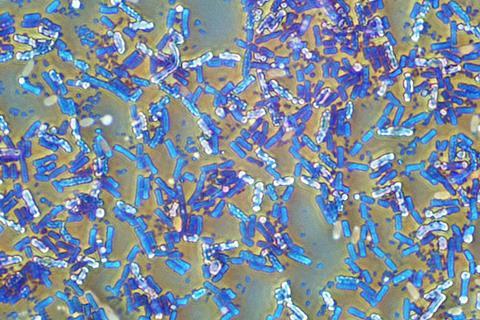A new perspective work reveals insights into the development of bacterial biofilms, highlighting how these communities adapt to environmental stress through complex interactions between physical and biological processes occurring in the surrounding environment. The research could have broad implications for fields such as medicine, environmental science, and industry.

READ MORE: Strategies needed to combat biofilm formation in the food industry to enhance food safety
READ MORE: Technique boosts biofilm growth for efficient wastewater treatment
Led by Prof. Liraz Chai from the Institute of Chemistry and The Harvey M. Krueger Family Center for Nanoscience and Nanotechnology at the Hebrew University of Jerusalem, and in collaboration with Prof. Vasily Zaburdaev from Friedrich-Alexander-Universität Erlangen-Nürnberg and Max-Planck-Zentrum für Physik und Medizin, and Prof. Roberto Kotler from Harvard Medical School, this perspective describes how physical and chemical processes occurring in the extracellular space of bacterial communities work together to shape biofilm morphology and physiology, thereby also allowing them to survive in challenging environments.
Biofilms form slimy layers on surfaces
Bacterial biofilms, often seen as slimy layers on various surfaces, for example, catheters, teeth and even plant roots, have long been studied for their complex behavior and resistance to external threats like antibiotics. However, this new perspective paper takes a unique approach by combining molecular biology with biophysics to highlight the importance of extracellular rather then intracellular processes in determining biofilm organization into complex structures that resemble human tissues.
By using Bacillus subtilis, a beneficial bacterium, as a model, the researchers were able to look closely at the interactions between extracellular molecules and between molecules and cells within these communities on both small and large scales.
In their assay the researchers explain that we need to broaden the discussion from the extracellular matrix to the extracellular space. The extracellular matrix is just one component within a complex environment, immersed in water, dissolved nutrients, signaling molecules, waste products, and metal ions. In this milieu, various physical processes directly influence biofilm physiology as molecules and bacteria interact and affect one another.
Biofilms adapt to environmental stress
The study highlights the role of proteins, polysaccharides, water channels, and metal ions in shaping the biofilm’s morphology. These components help create the macroscopic wrinkles and water-filled channels that allow biofilms to thrive.
In addition to understanding macroscopic structures in biofilms, the research also delves into how processes at the molecular scale allows biofilms adapt to environmental stressors such as dehydration. The findings suggest that the cross talk between cells in biofilms and molecular processes in the extracellular space enable complex biological processes, such as differentiation, to adjust their physiology to survive in changing environments.
This work serves as a reminder of how closely intertwined biological and physical processes are in shaping the microscopic world. Opening up new possibilities for understanding complex space-time hierarchical organization in biofilms from the nanometer scale of individual proteins to whole biofilms at the scale of centimeters, it offers an exciting step forward in biofilm research, with potential applications in combating biofilm-related infections, improving industrial processes, and protecting ecosystems
Topics
- Bacillus subtilis
- Bacteria
- bacteria
- biofilms
- Biofilms
- Friedrich-Alexander-Universität Erlangen-Nürnberg
- Harvard Medical School
- Hebrew University of Jerusalem
- Liraz Chai
- Max-Planck-Zentrum für Physik und Medizin
- Middle East & Africa
- One Health
- Research News
- Roberto Kotler
- UK & Rest of Europe
- USA & Canada
- Vasily Zaburdaev







No comments yet